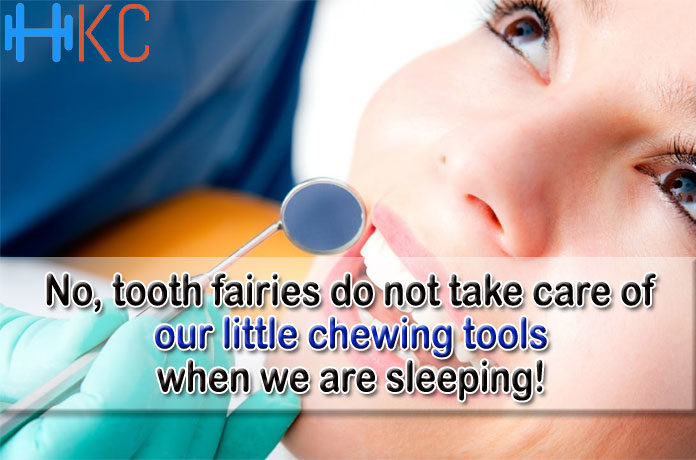An aching tooth is the worst thing that can happen to anyone. Drinking even plain and simple water seems a task and the fear of pain creeps in at the same thought. The mighty toothache has the power to quake our knees no matter how strong or powerful we are.
Yes, anyone who has suffered a toothache will know what the intensity of the pain is. That brings us to the question of what causes these little chewing tools to ache so much. Tooth decay and infections are the villains here.
For removing infection inside the tooth, endodontic therapy which is also popular as root canal treatment is essential. This treatment safeguards the tooth from future infections. This treatment takes place in the pulp of the root, the root canal;hence, the name of the procedure.
Some real-time facts and busting a few myths
Root canal treatment is the removal of the nerves from the pulp of the infected tooth. The thought every one concludes upon hearing root canal treatment is pain. But the fact is the whole procedure is painless as the concerned area becomes numb due to the administration of a low dosage of local anesthesia.So the patient doesn’t feel a prick and is comfortable throughout the procedure. Myth Busted. The root canal treatment is a way to save the infected tooth from being uprooted.
Another common notion people have about undergoing a root canal treatment is that they might fall sick or contract a disease in the future to come. That was long ago before modern medicine had not progressed and many unknown diseases were at loose. Now with the advancement in science, medicine and, the technology root canal is the safest option to consider than losing the whole natural tooth. Another myth busted.
It is never good to pull out the whole natural tooth than undergoing a root canal procedure. The best option is to save the natural tooth no matter what. No amount of technology can replace the original tooth. The functioning, the look,and the strength never changes by replacement of the tooth. In fact, the replacement of the extracted tooth with a bridge or implant takes more time. There are further chances of damaging the neighboring tooth or the tissues around the extracting tooth. Myth Busted.
Going through the procedure and retaining the little chewing tool
The root canal is part of the tooth. The hollow section has nerve tissues, other cells, and blood vessels. This inner part is the pulp of the tooth. The pulp is responsible for the nourishment of the tooth and in providing moisture to the surrounding area. Any pain felt in the tooth is in the pulp that feels extreme temperatures.
A patient undergoes a root canal treatment administered with local anesthesia to numb the area. It is extremely safe as the dosage is low and is only applied to comfort and ease the patient of any pain. The dentist then proceeds further in cleaning the root canal. The diseased and infected pulp undergoes cleaning while sterilizing the root. The dentist reaches the root canal by drilling the teeth on the surface to make holes.
Next, comes the tedious job where the dentist cleans, shapes and sterilizes the hollow area. The dentist uses tiny files and irrigation solutions to get the job done. Once the hollow canal is completely clean doctors seal it off with adhesive cement. A rubber-like substance finds its usage in filling the tooth before sealing.
Once the sealing is over and done with the patient no longer feels any pain in the particular tooth. It is so because the tooth is dead. The pulp being completely removed leaves no question of any sensation in the tooth. The removal of the nerve tissues and elimination of the infection ensure that the tooth doesn’t feel anything anymore. The tooth is also under protection from further damage due to infection.
Finally, the crown of the treated tooth. Protecting the treated tooth is pertinent. An unprotected treated tooth is always at risk of being damaged as it is brittle than earlier.
Reaping the benefits after the root canal treatment
The whole procedure is painless due to the administration of anesthesia. The recovery time after the procedure is indeed less as in comparison to the extraction of the entire tooth. Extraction of the tooth causes difficulty in biting and chewing food. The adjacent tooth tends to crook down which is an unpleasant feeling as well as sight. Also, nothing beats anything like the original tooth in its rightful place.
The tooth under treatment can last a lifetime if the patient takes proper care. So, the smile is intact.
Prevention is better than cure; the old proverb is so true to each of its word
Dentists instruct certain rules to take care of our teeth. That prevents the teeth from getting attacked by cavities and eventually infecting it. If the teeth are healthy and feel no pain, then there is no need for any Root Canals.
One should always use toothpaste containing fluoride. Preventing the building up of plaque is necessary. So, it is important to floss our teeth every alternate day and prevent the build-up of debris due to food residue. One should always avoid sugary drinks and foods. Even if the consumption is unavoidable, it is of utmost importance that you wash your mouth immediately after eating. It prevents the build-up of the sugar in the corners of our teeth which leads to the cavity.
Regular check-ups with the dentist will help determine the health of our mouth and teeth. Complete oral checkup prevents a lot of other diseases like diabetes and heart diseases. The golden rule is to brush our teeth twice a day once before bedtime and another at any time of the day. The toothbrush should not be very old. It is advisable to change toothbrushes after every three months of usage.
And once upon a time, we thought that tooth fairies come and save our teeth while we are sleeping. Is that so?























